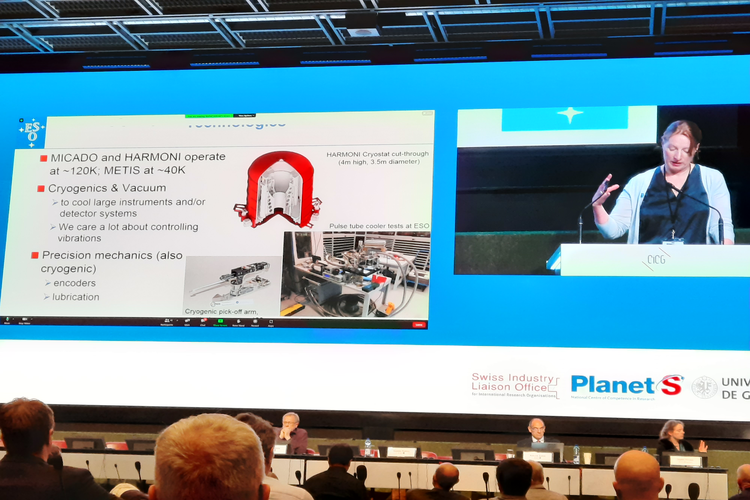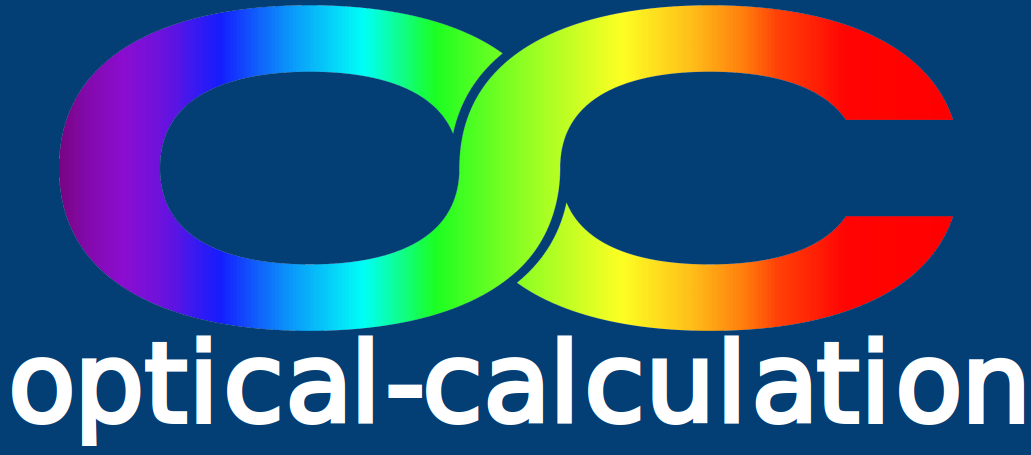Laser beam propagation - January 2025...
It is now possible to calculate the intensity distribution of a laser beam after transmission through an optical system. Using an adapted ray tracing method and wavefront error calculations, this functionnality is well adapted to systems with moderate aberrations and to configurations where surfaces are either in the near or far fields.

3D display in the input interface - November 2024...
The user interface that recently integrated a 2D view of the system being entered now allows it to be viewed in 3D as well. This highly appreciated feature is available both on the standard interface and on the quick entry interface.

Windows catalog now available - October 2024..
Our component catalog containing more than 8000 references now includes windows. They can of course be used for simulation in the "Advanced Calculations" tool by injecting the chosen reference into a system via the standard interface or via the quick interface.

New software interface - September 2024...
The "Advanced Calculations" user interface has changed. It provides intuitive access to input pages, allows you to select the surfaces whose parameters you want to display, offers a color code according to the type of surface and enables you to better control the parameters entered by offering a view of the system.

Full MTF calculation - June 2024...
Until now, it was only possible to calculate the optical MTF (modulation transfer function) of a system. The "Advanced Calculations" tool now allows to calculate the MTF of an optical system with a sensor located at the observation surface. This functionality is accessible via the Full MTF button.
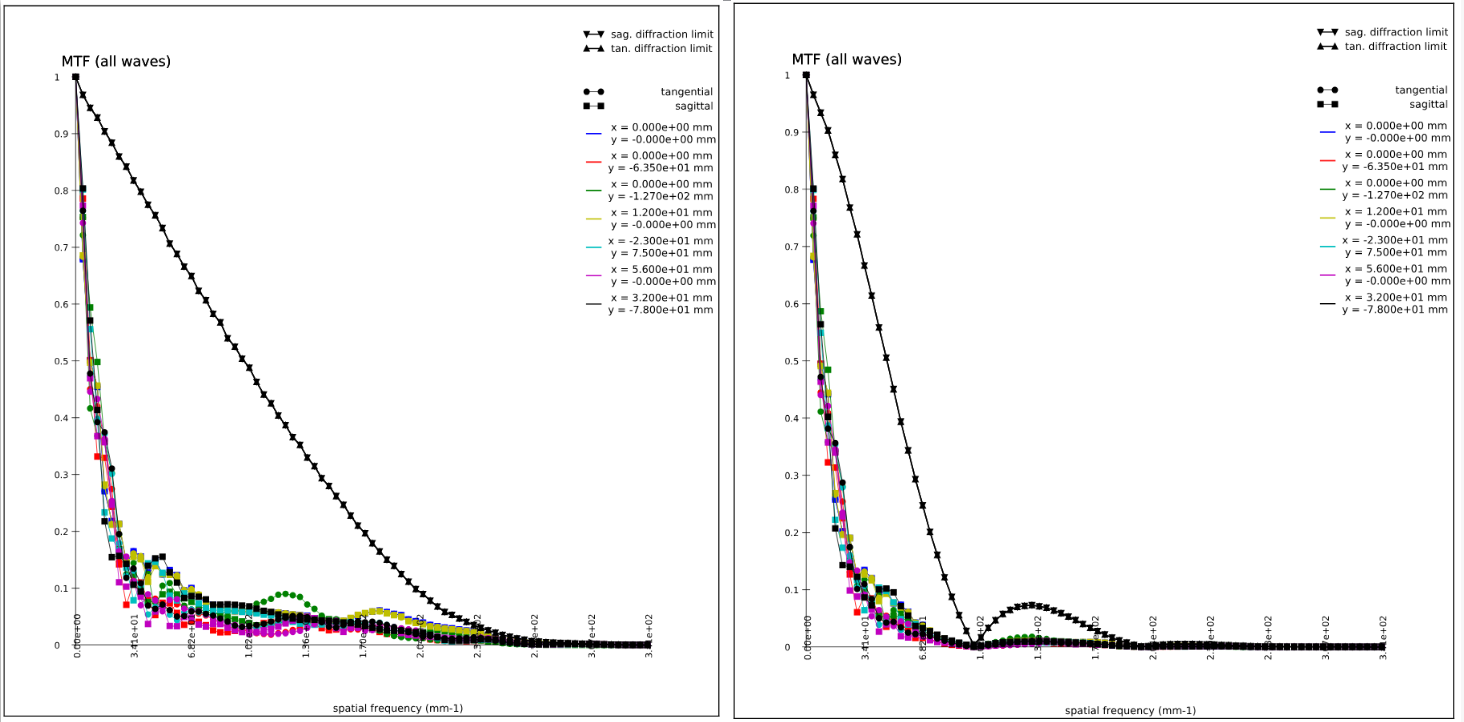
Award at SPIE Photonics Europe Innovation Village - April 2024...
During the SPIE Photonics Europe conference in Strasbourg, our company CLAVIS has been awarded in the frame of the "Innovation Village" for its optical-calculation software. We are very proud of this award delivered by a committe including representatives from the European Commission Photonics Unit, SPIE, Photonics 21, Université de Strasbourg, a large European photonics company and a bank/venture capital company.
post linkedin
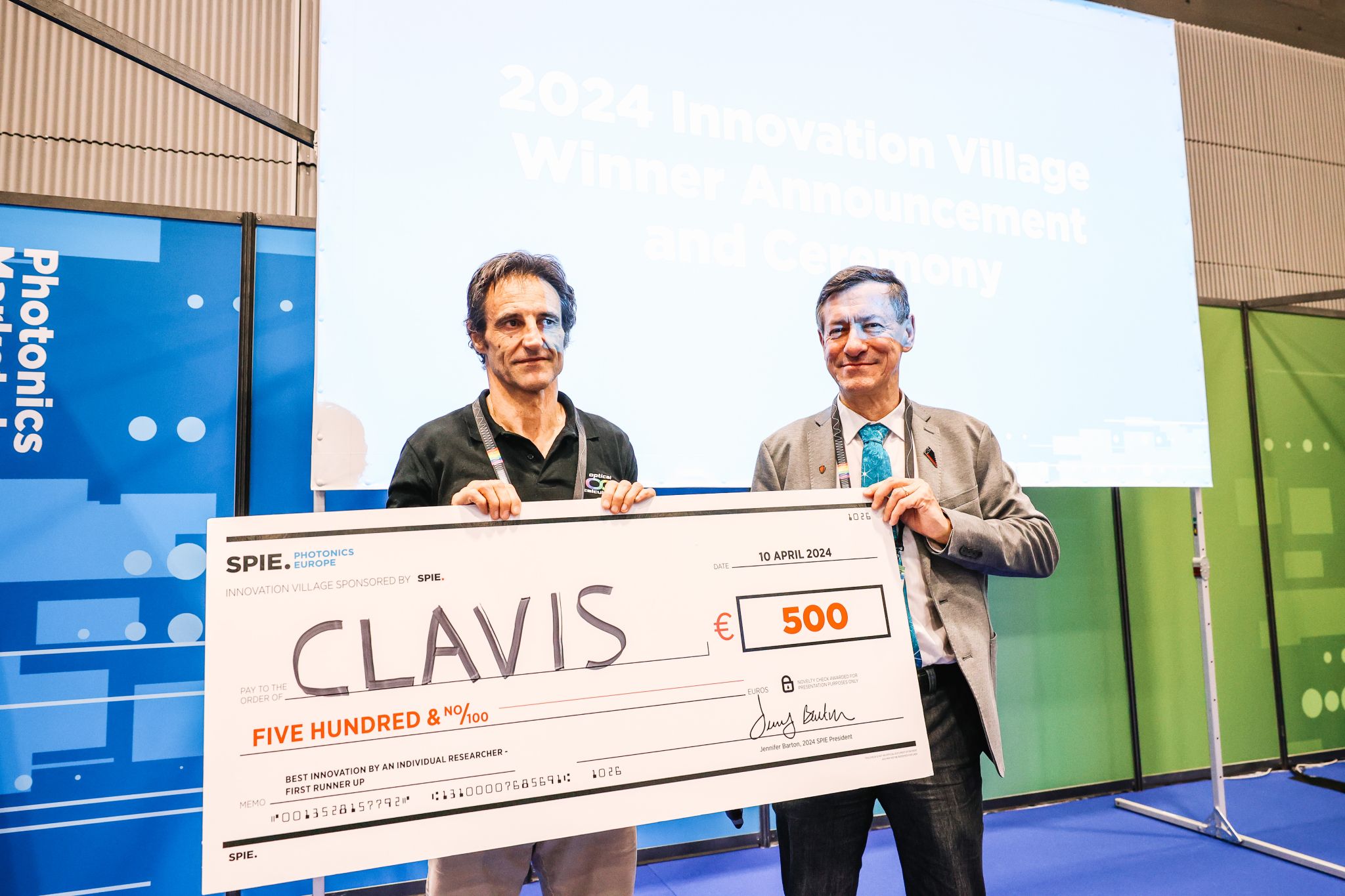
First user case solver on line - March 2024...
It is now possible to solve a full problem in one or two clicks. Indeed, the unique structure of "optical-calculation" mixing calculation tables and ray tracing software allows to automatize processing sequences and deliver immediate solutions to complex problems after having entered basic input only. The actual solvers are available on the User cases solver page and can also be reached from the menu.
This new tool saves time by avoiding many calculations and simulations. It avoids errors and doesn't request practise, thus allowing even non experts to quickly obtain a solution.
The user cases are mostly developed on demand, therefore, don't wait any longer to submit us your problems to solve.
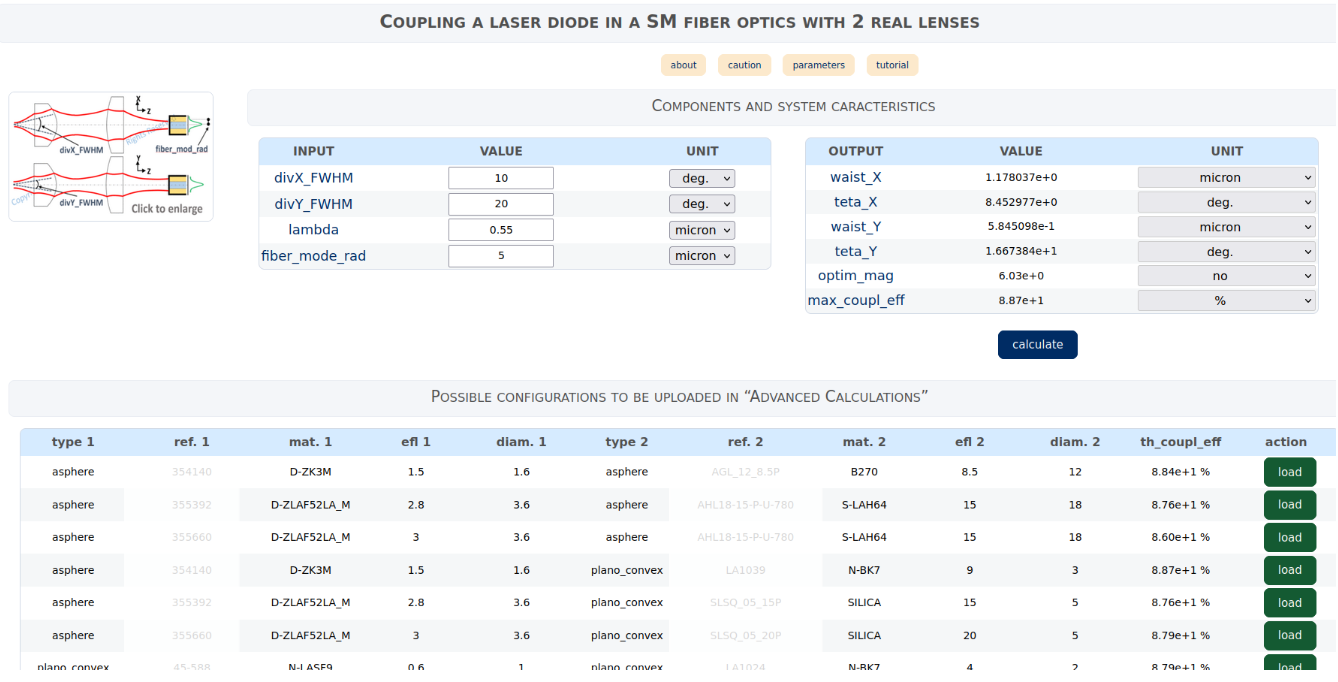
Constrained parameters - January 2024...
It is now possible to make the parameters of one surface dependent on those of another. This makes it possible to carry out constrained optimizations allowing, for example, the design of optical systems with given types of components (biconcave, biconvex, etc.).
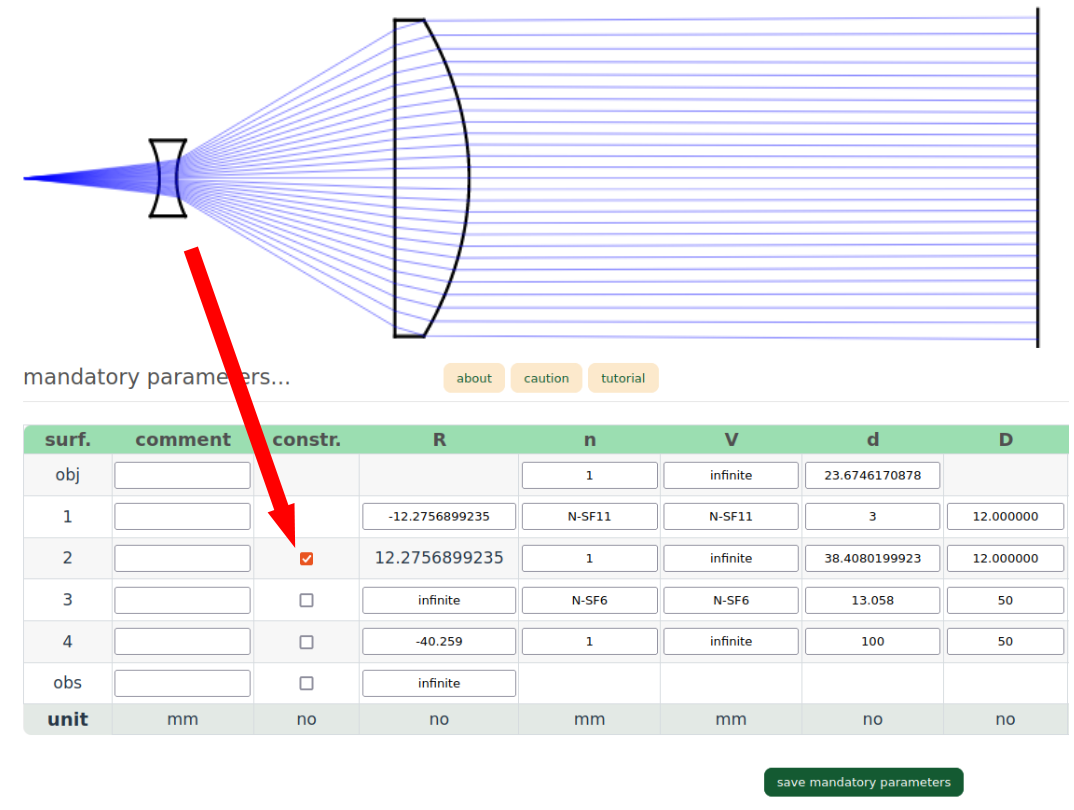
Improvement of optimization functions - January 2024...
Optimization algorithm has been improved. It is for instance very well suited for components assembly, thus enabling quick set-up of an experimental bench or prototype using components from the catalogs.
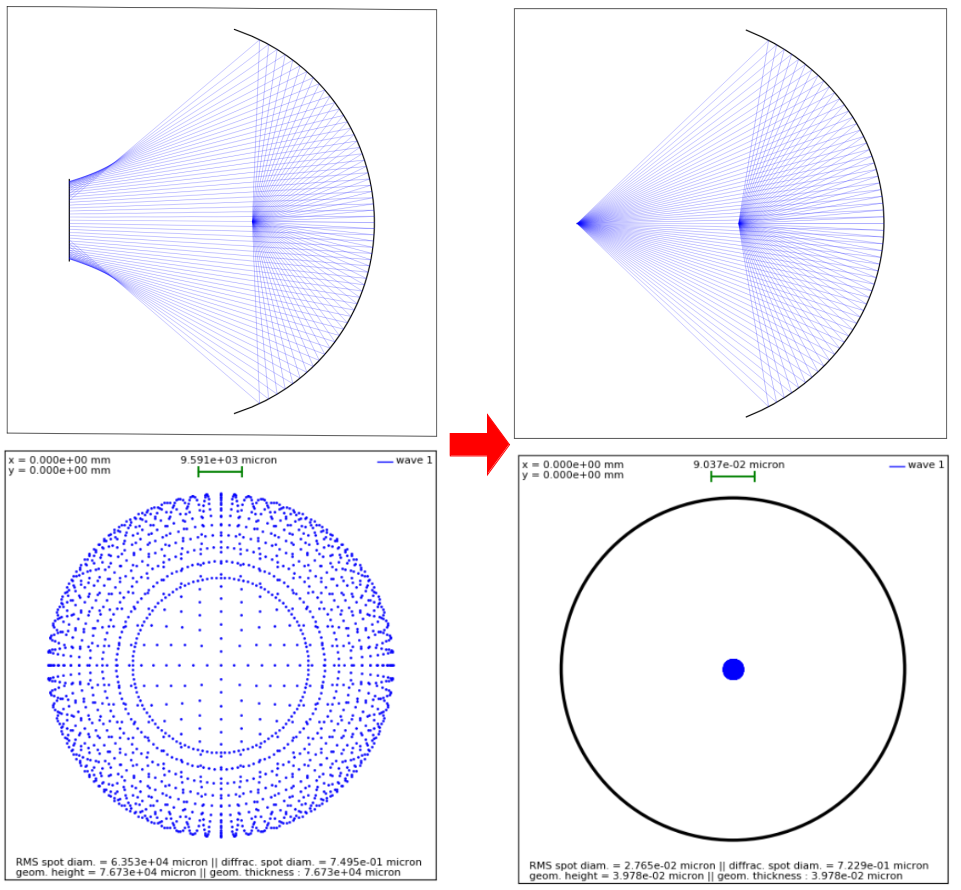
New cylindrical lenses in the catalog - January 2024...
Many type of lenses were already available in the catalog, including asperical lenses, achromats, ball lenses, best form lenses,..., as well as cylindrical lenses with circular outline. Cylindrical lenses with rectangular shape are now also part of the catalog.
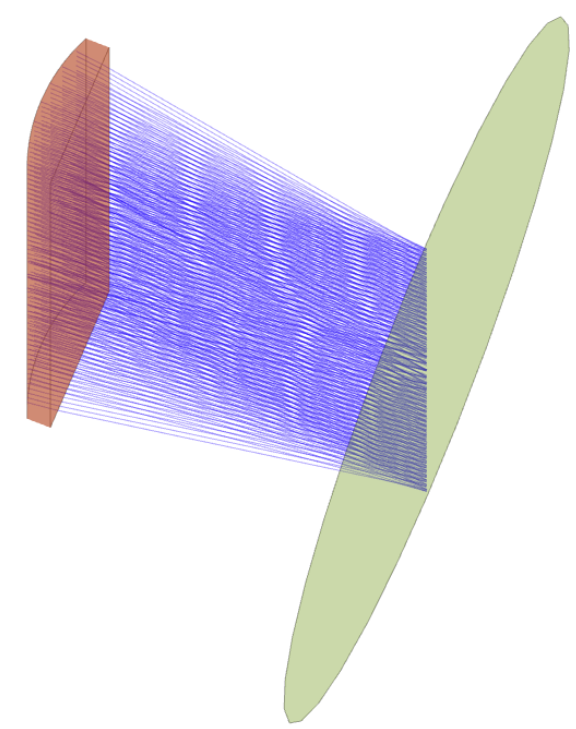
Automatic positionning features - November 2023...
The “quick entry” interface and the “insert a component” feature were already positionning components to enable as far as possible ray transmission from the first entry. New tilts and decenters option enable now quick and easy surfaces positionning in the standard interface thus allowing automatically ray transmission after tilts and/or decentering changes. these options avoid wasting time and making tedious preliminary calculations. They make it possible to enter complex configurations in very short times.
Gratings and prisms catalogs - September 2023...
Gratings and prisms are now included in the components catalogs. They can be used in the software either in the "quick entry" inteface or by the "insert a component" feature.
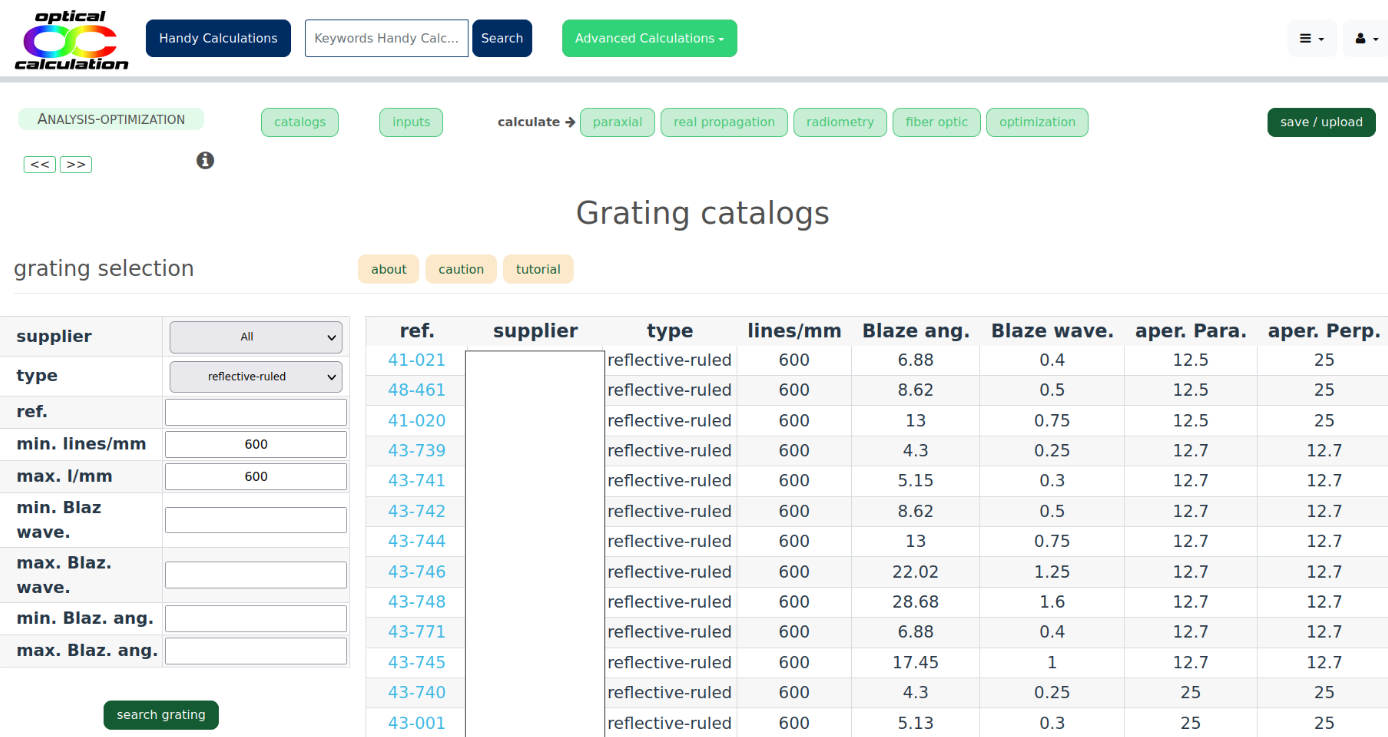
JNOG - July 2023...
It was a great chance to have attended in Lyon during the JNOG the presentation of our Nobel Prize Alain Aspect on the debates between physicists concerning the interpretation of quantum mechanics theory and on his contribution to the 2nd quantum revolution.

Laser World Of Photonics - June 2023...
Optical-calculation is honored to have exhibited in LWOP 2023. Our booth was on the French pavilon thanks to Business France Organization and Optitec cluster.
It has been the occasion to meet users and meet also many new potential ones. Many thanks to them!
The interest aroused for optical-calculation during the exhibition is very encouraging and confirms our development choices.

New quick entry interface - May 2023...
The quick entry interface has been added to the Advanced calculations module. It avoids users having to enter the surfaces of an optical system one by one. It instead allows selecting components from catalogs and laying them out very simply.
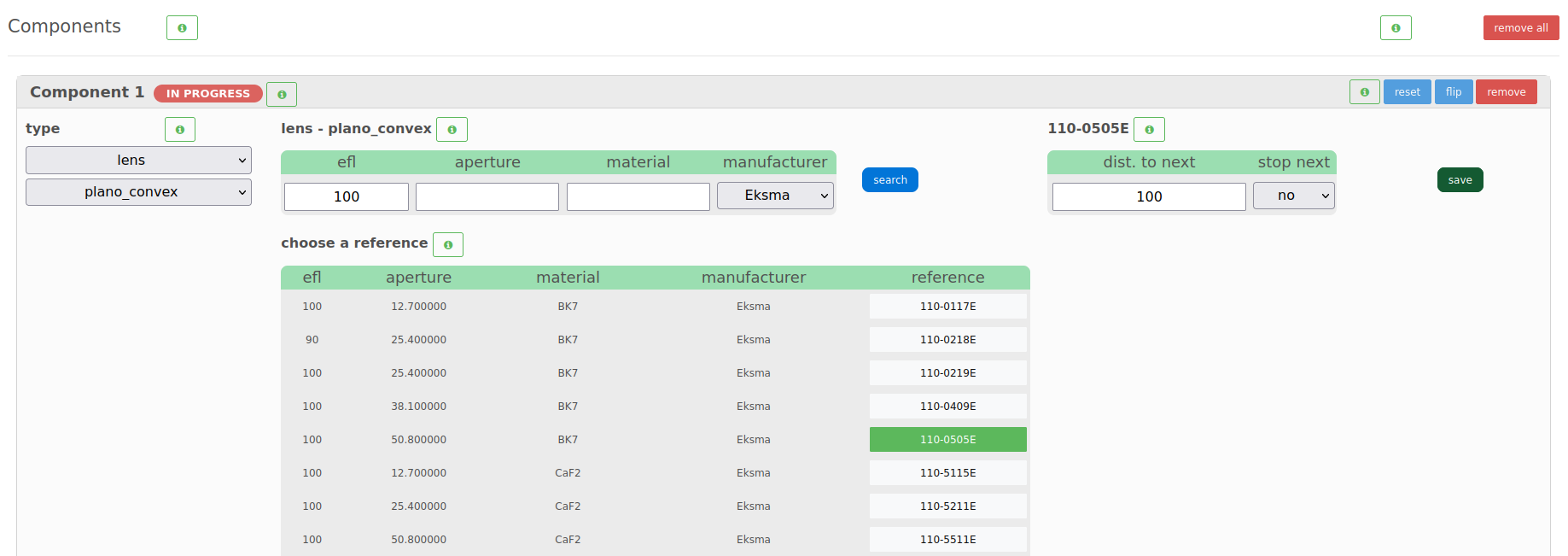
Optimization features are now available - March 2023...
Optimization features are part of the Advanced Calculations module. they allow to modify the parameters of a system for reducing aberrations, for reaching a given focal length or magnification... Variable parameters, merit functions as well as boundaries can be selected and defined in the input menu. Optimization sequences are activated by the calculate->optimization menu.

Webinar on optical simulation - November 2022...
We were pleased to participate to the webinar "Modélisation et simulation appliquées à l'optique" organized by ALPHA-RLH cluster.
You can see the replay of this event by clicking on the following link: replay.
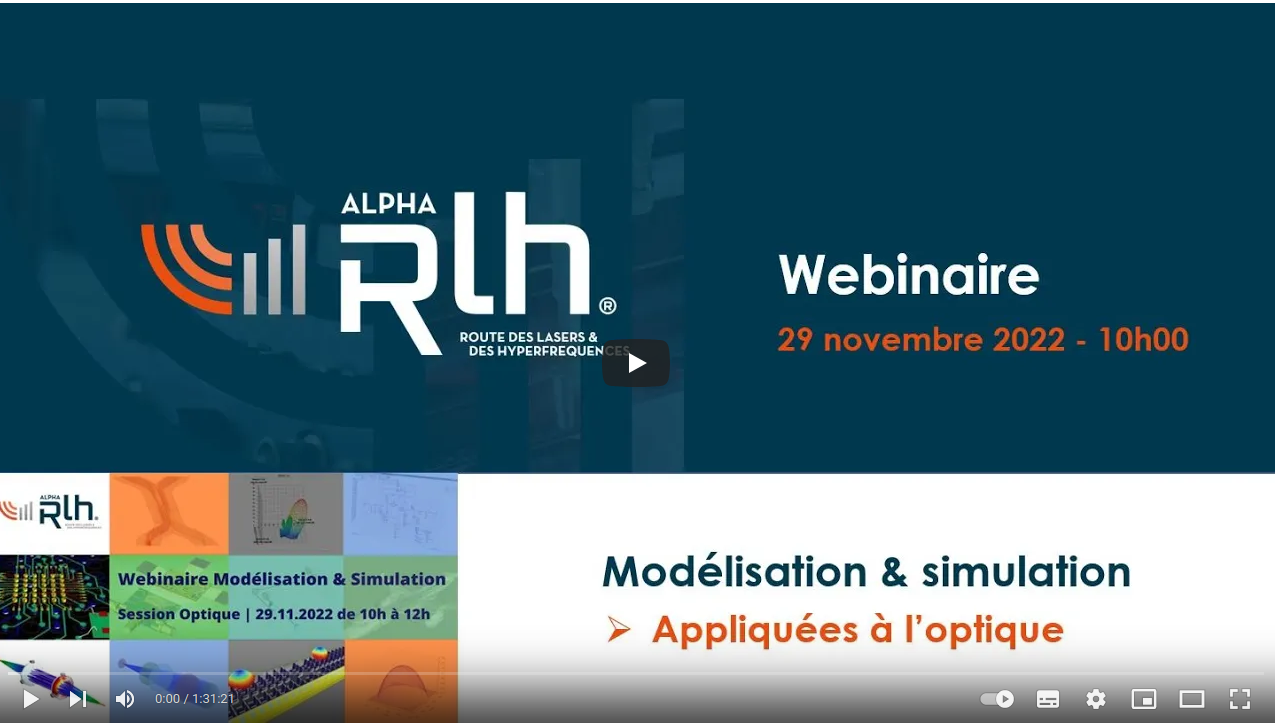
Fused silica ball lenses in the catalog - November 2022...
Plano convex, plano concave, bi convex, aspherical lenses as well as achromats were already part of the lenses catalog. Fused silica ball lenses have been added. 4216 lenses references are available today for simulation in optical-calculation.com.

CDGM glass catalog now online - November 2022...
"SCHOTT", "HOYA", "OHARA" as well as generic glass catalogs were already available for simulation on optical-calculation.com. The CDGM glass catalog has been uploaded and completes the list. More than 700 glasses are now usable.
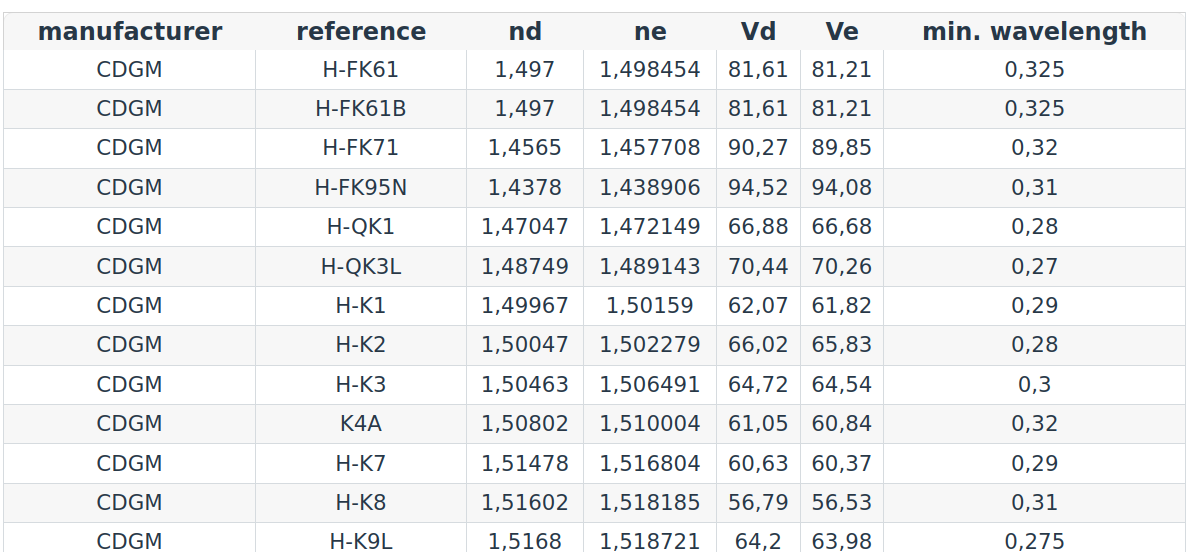
SFO congress in Nice - July 2022...
We are happy to have participated in the SFO congress in Nice from the 4th to the 8th of July. This is the most important congress dedicated to optics in France. Many interesting and state-of-the-art presentations were proposed in various fields of photonics. That was the opportunity to get feedback from users and demonstrate the capabilities of the software to scientists involved in photonics.
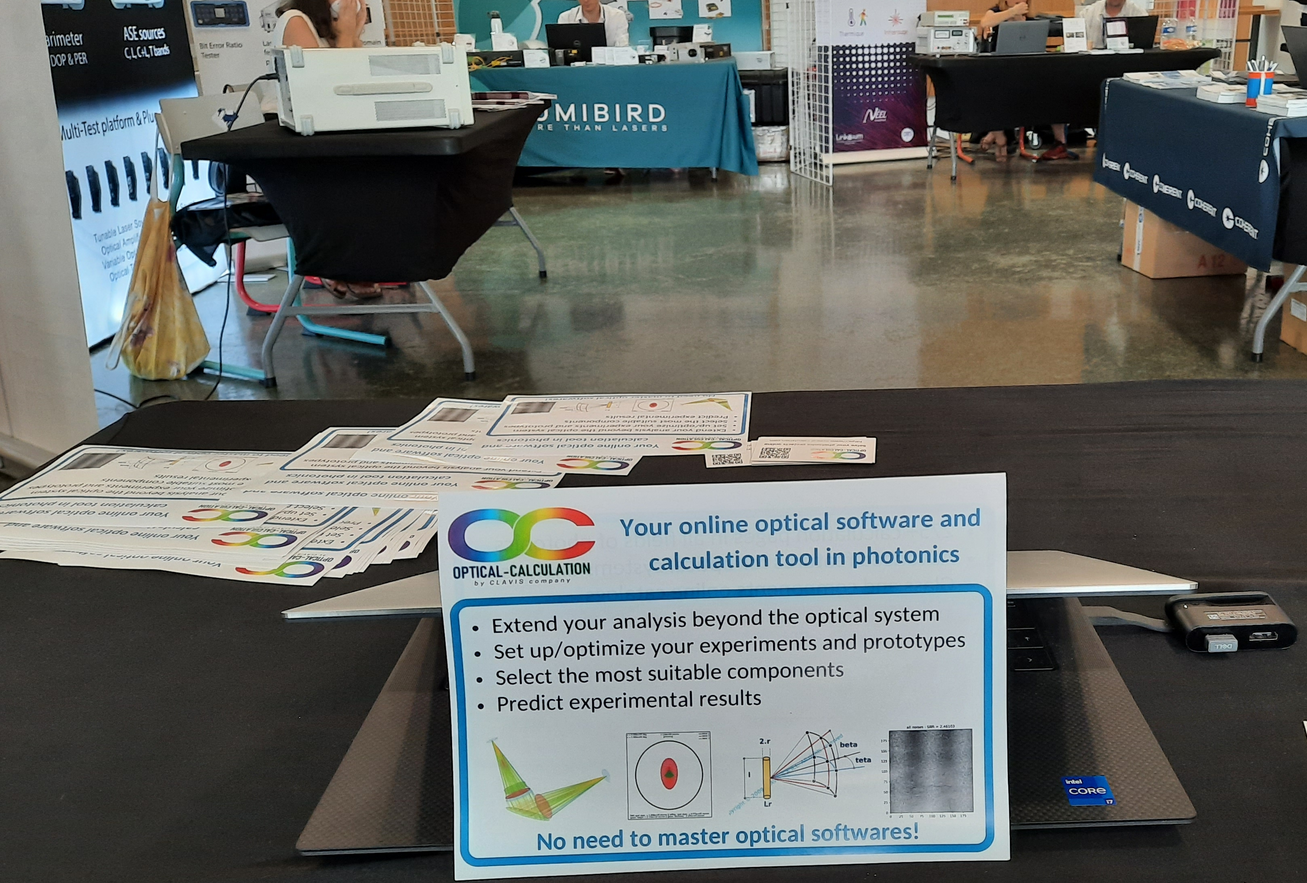
Components catalogs are now available for simulation - July 2022...
Users of our "ADVANCED CALCULATIONS" tool dedicated to optical system analysis have now access to components catalogs. They can select components according to criteria and upload them for simulation. This feature simplifies the entry of parameters and allows to simulate off-the-shelf components. Note that links to relevant manufacturer pages are proposed when possible.
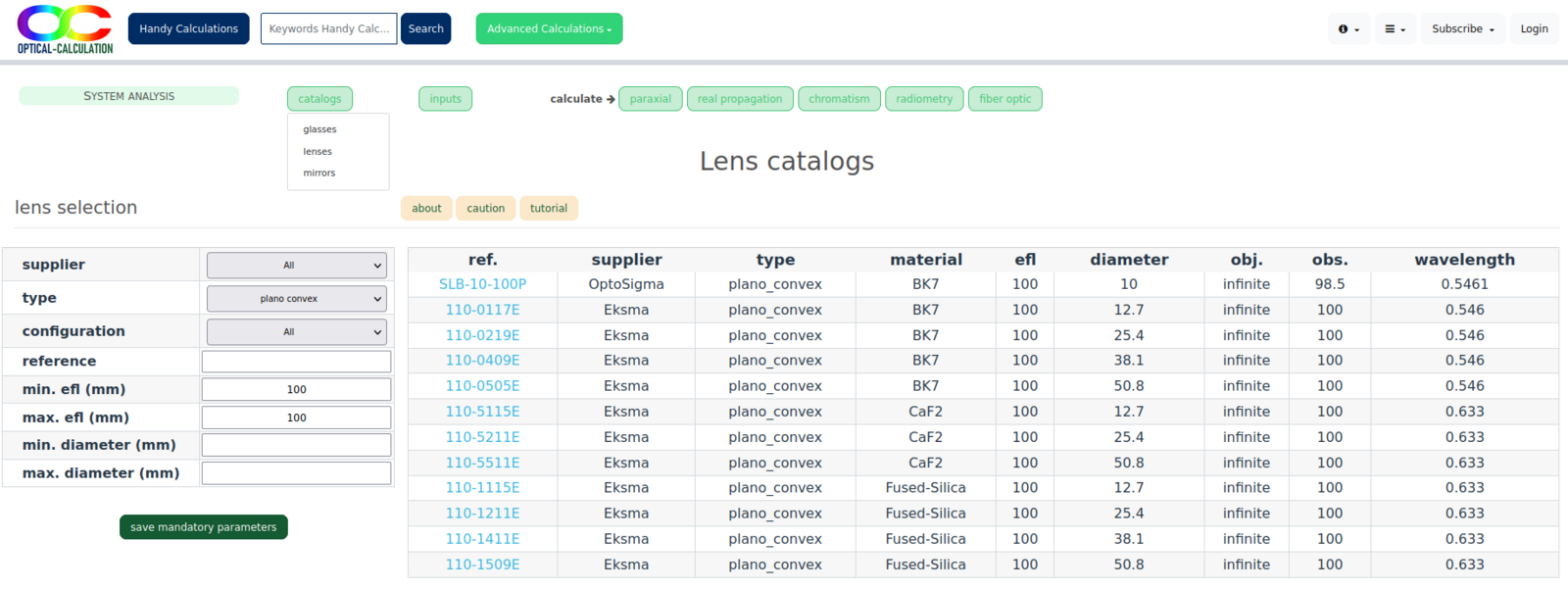
Laser World of Photonics - 26th to 29th of April 2022...
CLAVIS was pleased to participate in the Laser world of Photonics exhibition for launching the OPTICAL-CALCULATION software.
This has been a very favorable show. It allowed us to initiate many contacts and to benefit of numerous information and advices to improve our online tool.
Thank you very much to everyone who has expressed interest in us.
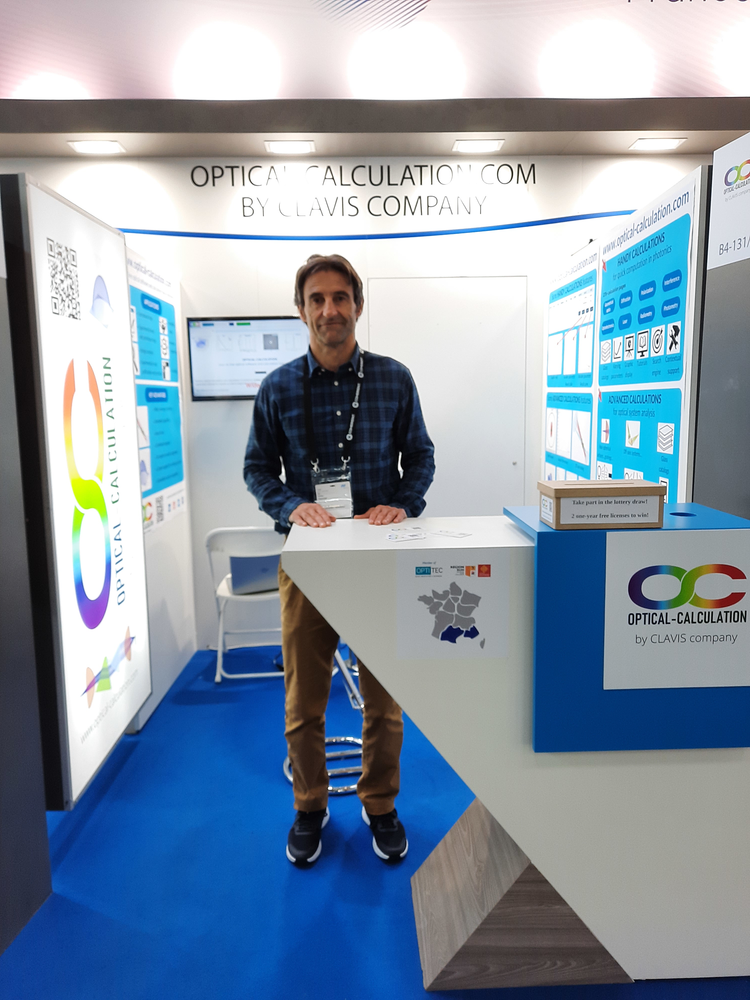
Gratings are now available in the ADVANCED CALCULATIONS portfolio - April 2022...
Calculations with diffraction gratings were already proposed in the HANDY CALCULATIONS module. Simulations involving gratings and therefore grisms are now part of the ADVANCED CALCULATIONS features. As a result, it is at present possible to analyze many types of real optical systems dedicated to spectral filtering such as spectrometers.

ELT Instruments day - Geneva - April 2022...
Thursday, April 7 was held the "ELT Instruments Day" in Geneva. This event was organized to inform the ESO suppliers on the business opportunities arising from the construction of the ELT instruments in the coming years.
CLAVIS has participated to this day as provider of the OPTICAL-CALCULATION software. All the speakers made clear and very interesting presentations on the steps already fulfilled and those to come concerning this enormous and very exciting project (ELT). The poster session also allowed to make very relevant contacts. For many of us, this day has been successfull thanks to a perfect organization.
